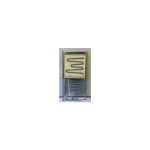When it comes to choosing the right photo for a painting, there are a few things you should keep in mind.
Avoid photos with a lot of clutter or that have been significantly altered (photoshop).
If you do choose a photo, make sure it has some interesting features or focal points that are worth painting.
Painting by numbers
Painting by numbers is a stress-busting activity that is perfect for any age and level of experience. It helps reduce anxiety and create focus, while also promoting mindfulness.
It’s also a great way to try out new techniques without any fear of failure. You can learn techniques like blending colors, creating textures and using different brushes.
If you are new to diamond painting tiere by numbers, it’s important to practice on a spare piece of paper first to get the hang of it. This will help you avoid making any mistakes in the finished project.
You should also remember to fill the dark parts of your painting before you start working on the lighter areas. This will prevent smudging or tinting of the color in another part of the picture.
Painting on canvas
Painting on canvas is a classic approach to art that has been adopted by masters of the art world for centuries. It offers many advantages over paper, including its pleasing receptivity to the brush and its durability.
Canvas has been used as a support for painting since the 14th century, replacing wooden panels in oil paintings. One of the earliest surviving oils on canvas is a French Madonna with Angels from around 1410.
In modern times, canvas has become the most common support medium for oil paintings. It is less prone to warping and cracking than wood panels, and it’s also lightweight and easy to transport.
You can choose from a wide variety of options for your canvas, ranging from inexpensive woven cotton to more durable linen, which is often primed and more expensive. Regardless of the material you decide on, make sure to prepare it for paint using gesso before beginning your work. This will keep the fibers of your canvas from coming into contact with the paint, which would cause it to decay over time.
Painting on paper
Painting on paper is an excellent choice for beginners as it offers a cheaper alternative to stretched canvas. It also offers more flexibility in the way you can paint, allowing you to create quick studies before committing to a final work of art.
Some paper is designed specifically for use with oil-based mediums, whilst others must be primed before using them. This is because the oils from the paint can soak into the paper fibres, degrading them over time.
If you want to paint with acrylics on paper, make sure you select a high-quality piece of acid-free paper. This will prevent your acrylic paints from damaging the paper fibres and making blending more difficult.
Painting on wood
Painting on wood is a great way to add texture and depth to your artwork. It is also an inexpensive option, and the finish you get will be long-lasting.
Before you begin painting on your wood, it is important to prepare the surface. This involves sanding the wood and applying a primer.
Having the wood properly prepared before you begin painting ensures good paint adhesion and helps keep your art more durable.
Another important step is to choose the right paint for your project. There are a variety of paints available, so it is best to do some research to find one that works well for your project.
Using acrylic paints is the best choice for painting on wood. They are easy to apply and can be used with a variety of brushes. They can be purchased at art stores and craft stores. These types of paints are also a great option for beginners who want to try painting on wood.

